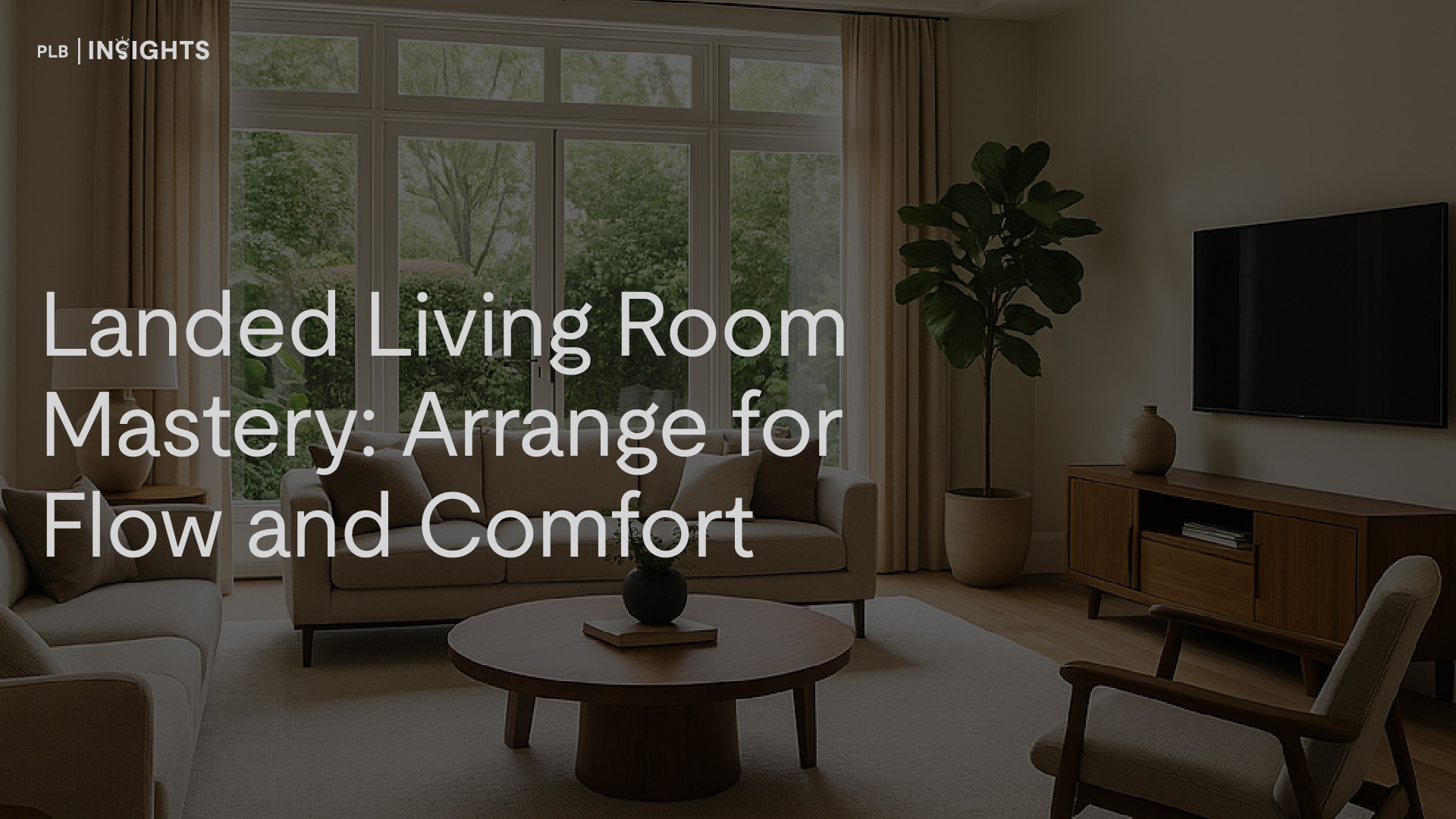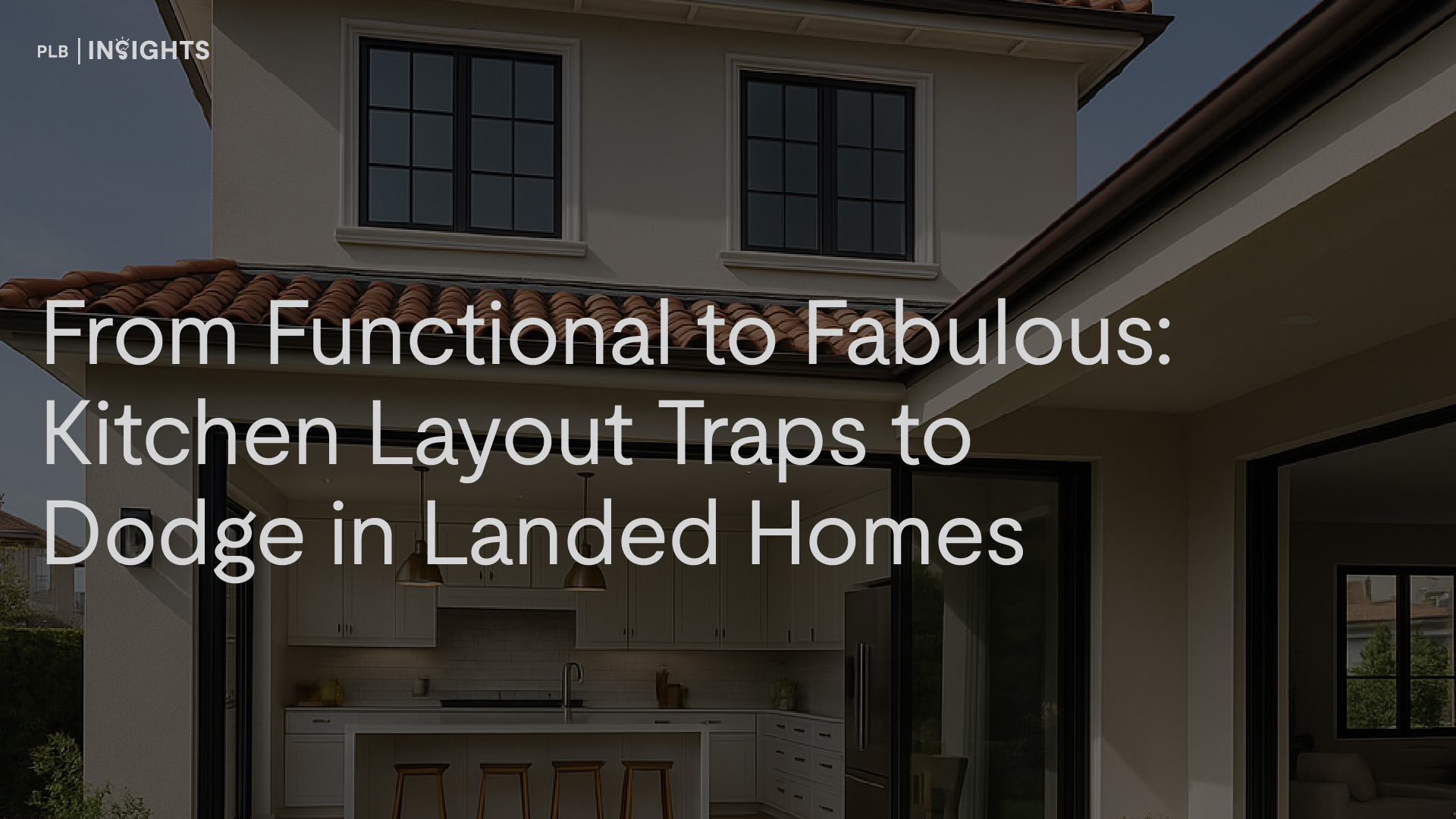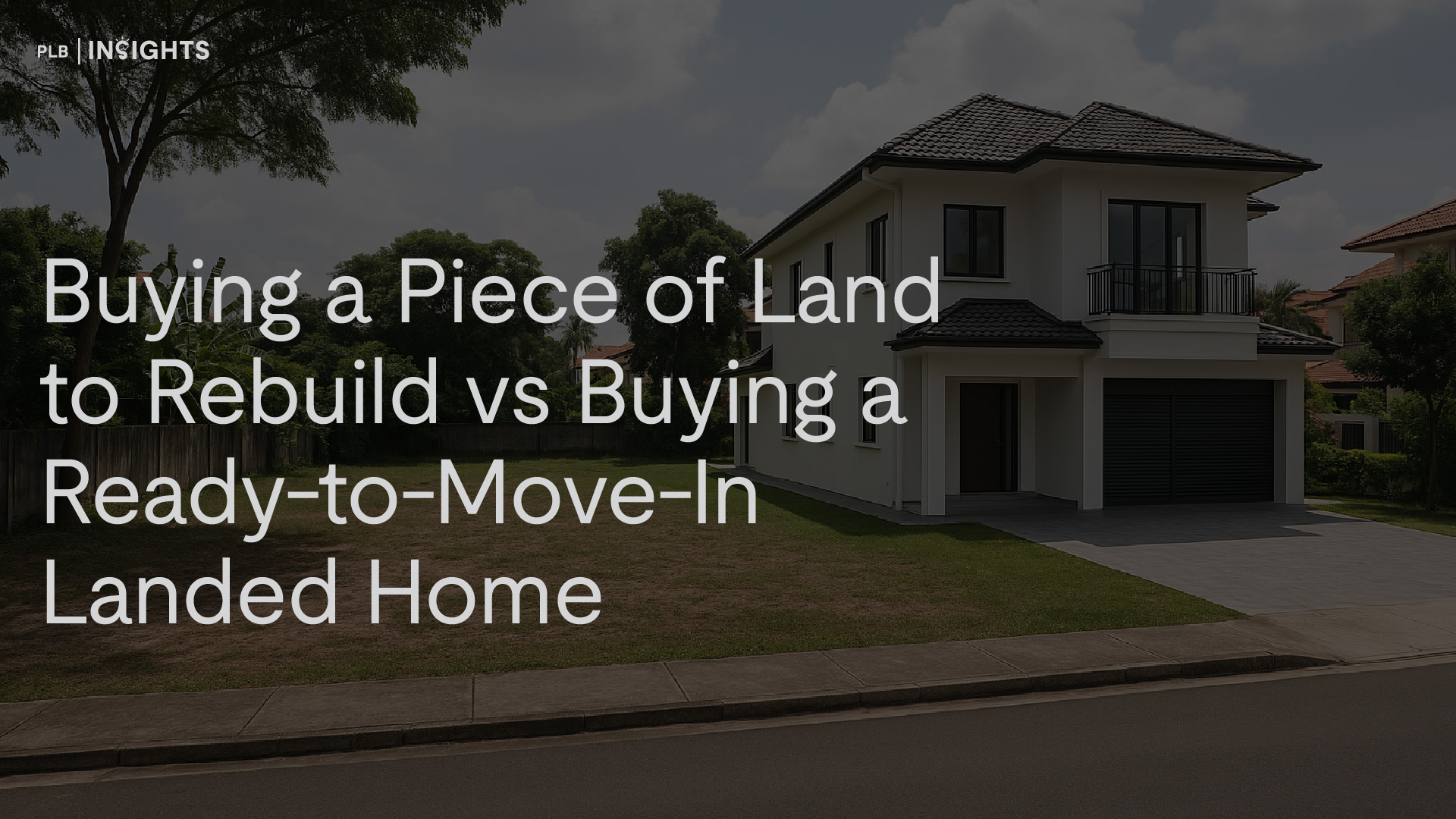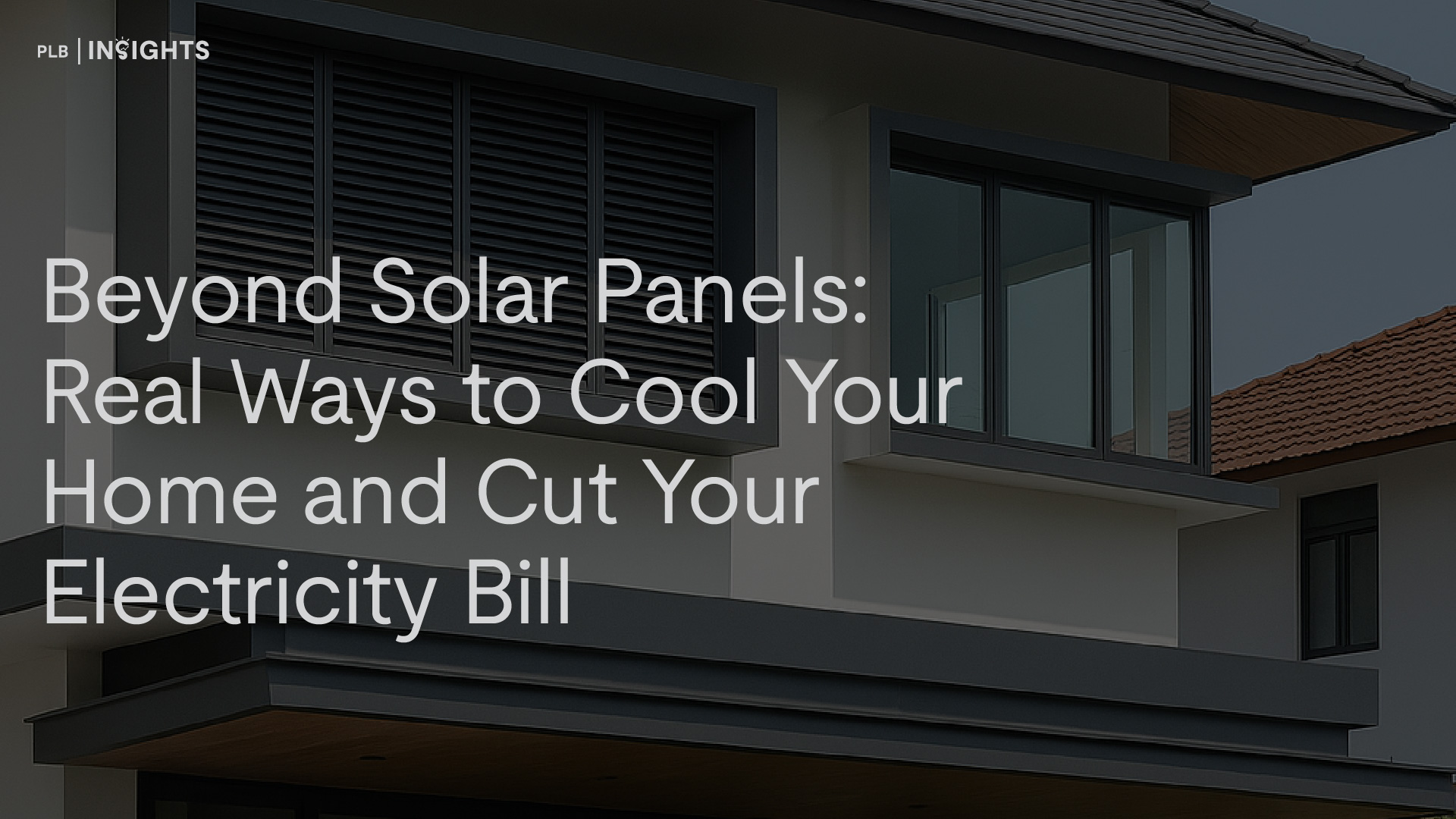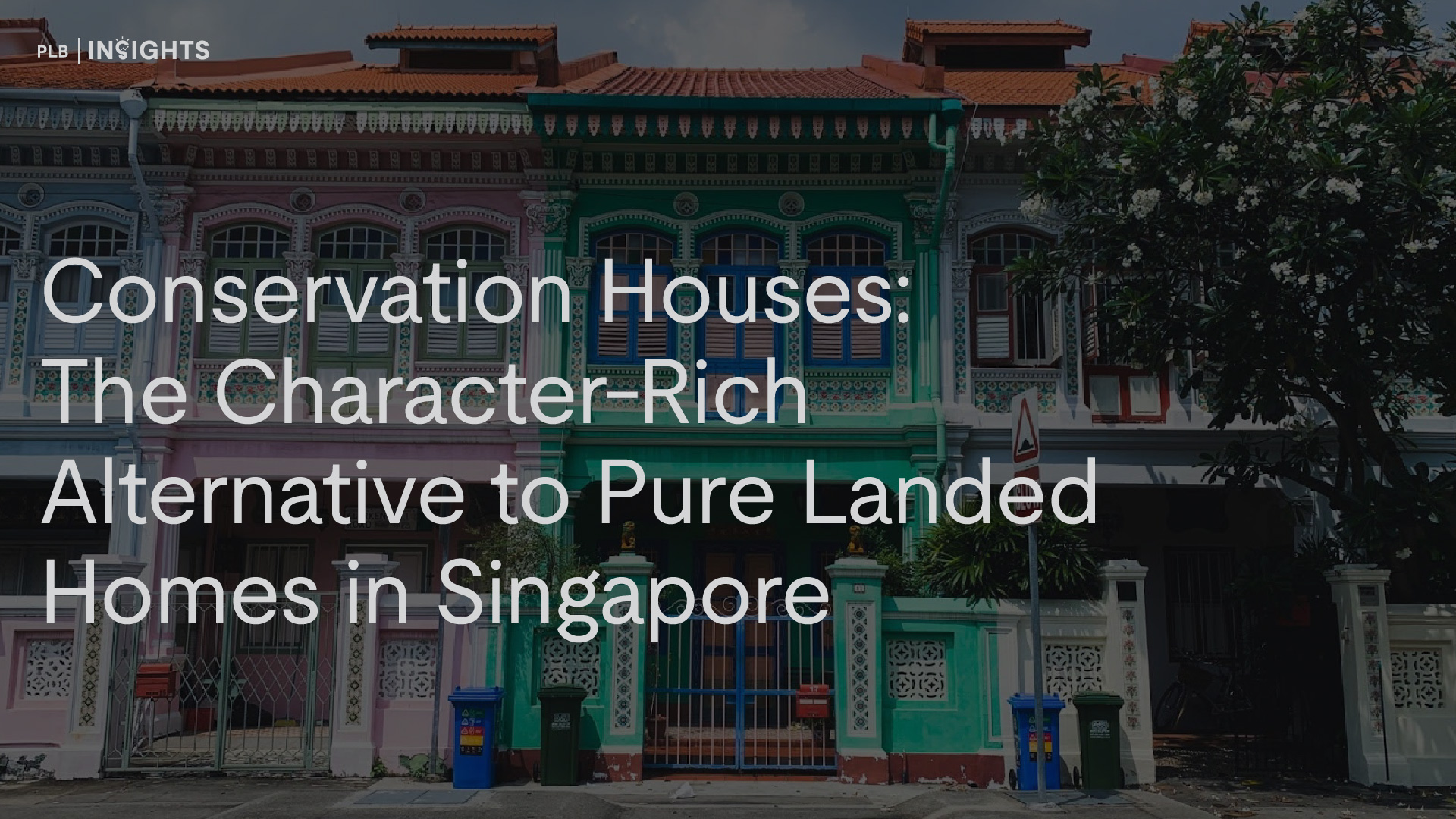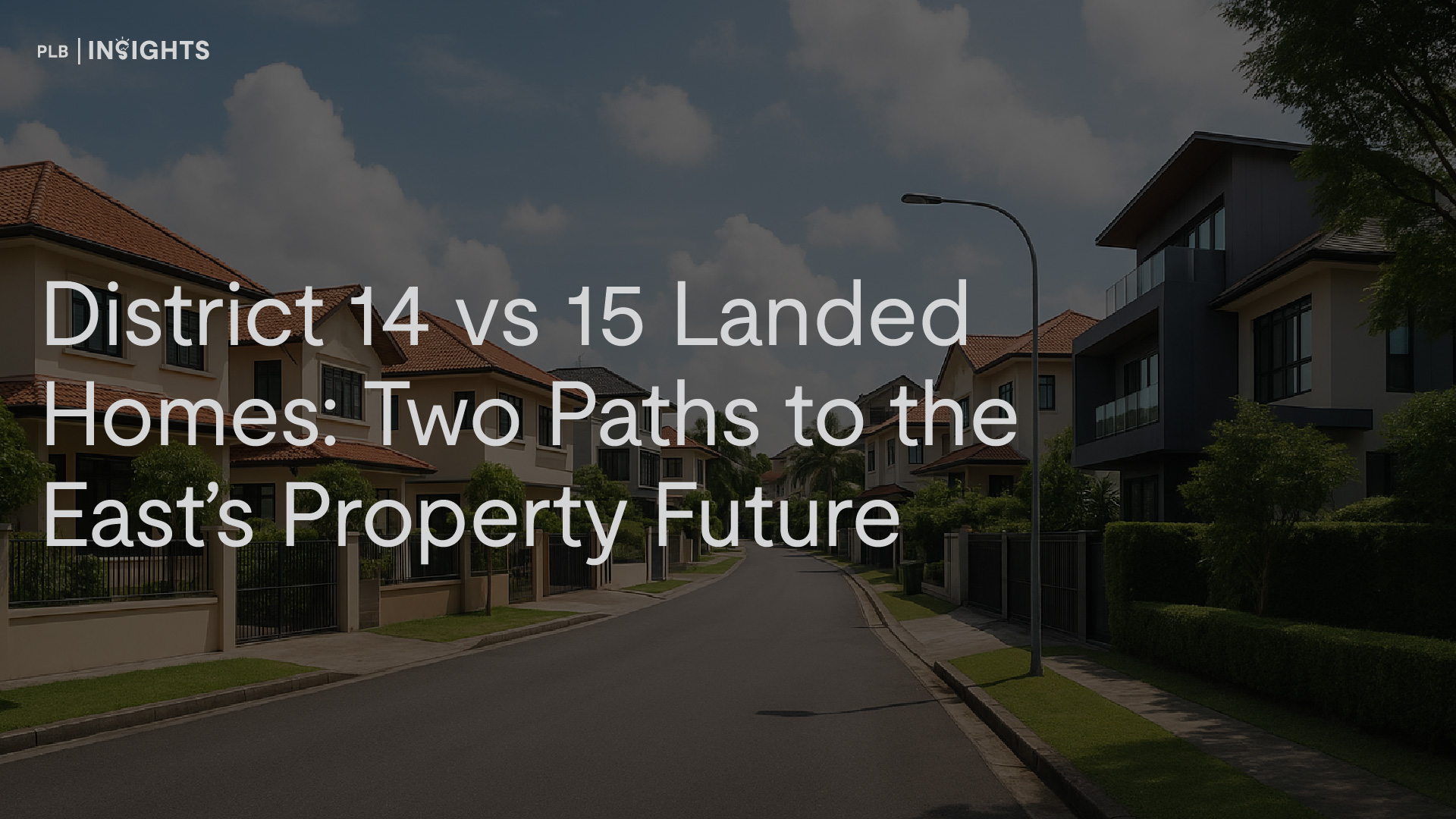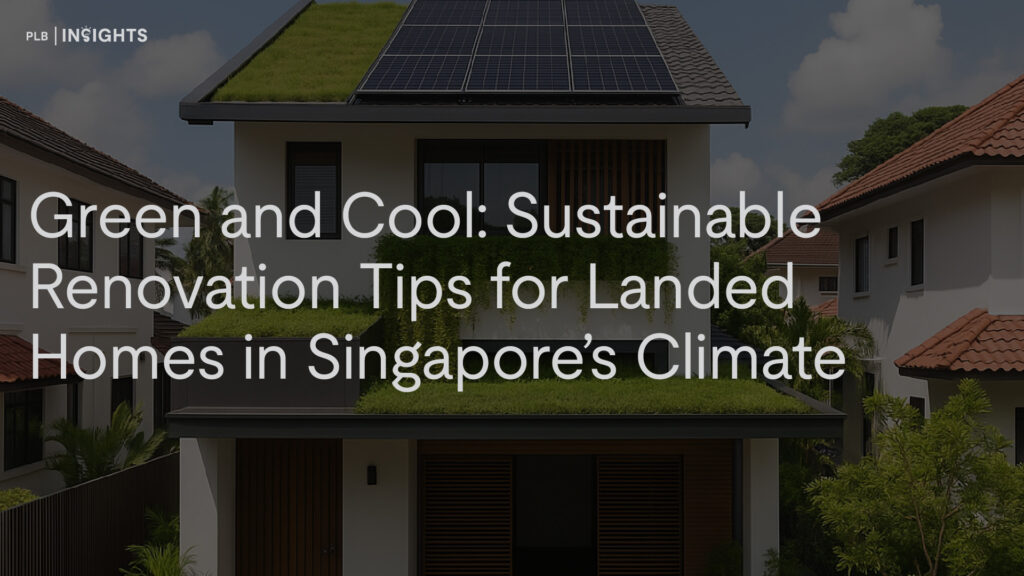
Singapore’s weather has always been warm and humid, but recent years have seen increasingly intense heat waves and heavier rainfall. According to the Meteorological Service Singapore, the nation recorded its highest-ever daily maximum temperature of 37°C in May 2023, and mean annual rainfall is projected to rise further due to climate change. For landed homeowners, this means renovation plans now need to account not just for aesthetics and comfort, but also for resilience against hotter and wetter conditions.
The good news? Sustainable renovation strategies can help keep your home cool, reduce long-term running costs, and future-proof your property against shifting weather patterns. From passive cooling to renewable energy and rainwater management, here’s how to design a landed home that works with the climate—not against it.
Passive Cooling: Designing for Airflow and Shade
Air-conditioning may be a quick fix for heat, but it’s costly to run and energy-intensive. In landed homes—where you often have control over orientation, setbacks, and openings—passive cooling can make a huge difference.
Breeze Corridors
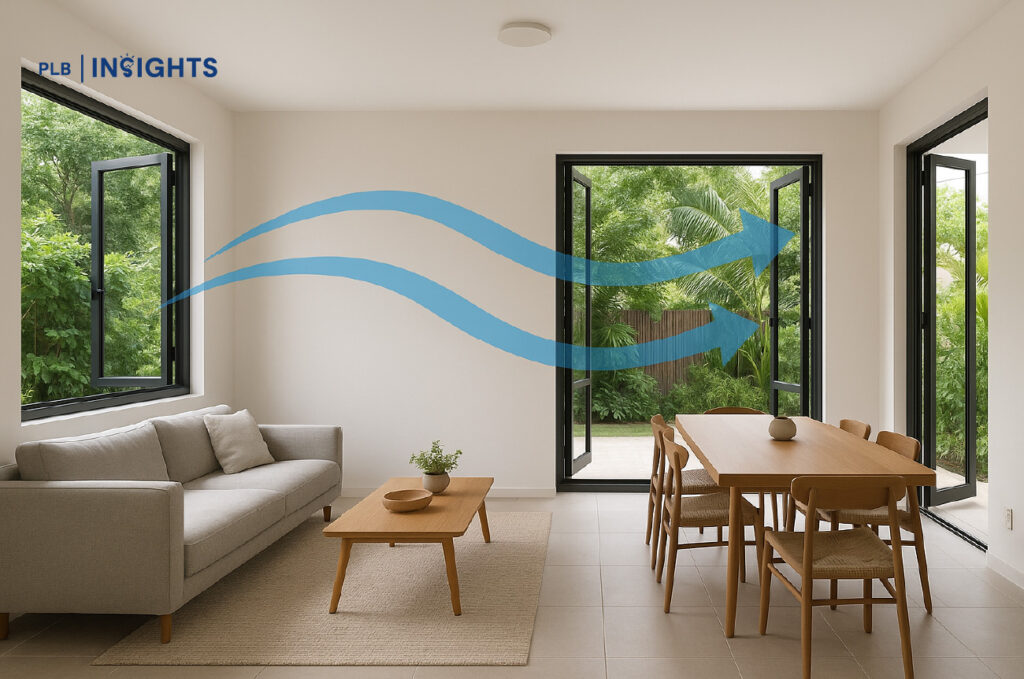
If you’re renovating, consider aligning windows and openings to create cross-ventilation paths. For example, placing operable windows on opposite sides of a living or dining area allows prevailing winds from the south or southeast (Singapore’s dominant wind directions) to flow through the home naturally. Louvered windows and perforated screens can enhance privacy while still allowing airflow.
Shading Strategies
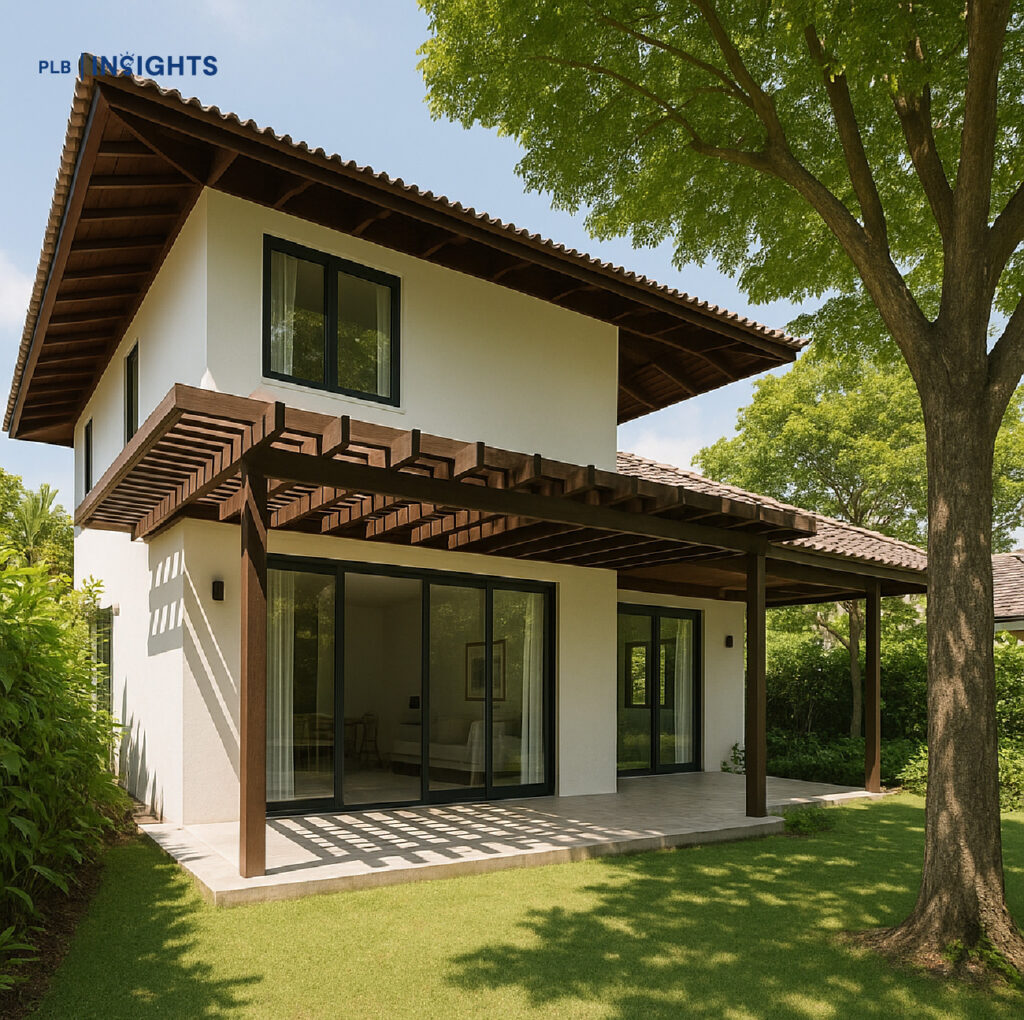
Architectural shading, such as deep overhangs, verandahs, and pergolas, can block direct solar heat while letting in diffused daylight. Planting shade trees along west-facing facades reduces heat gain during the hottest afternoon hours.
Light-Reflective Materials
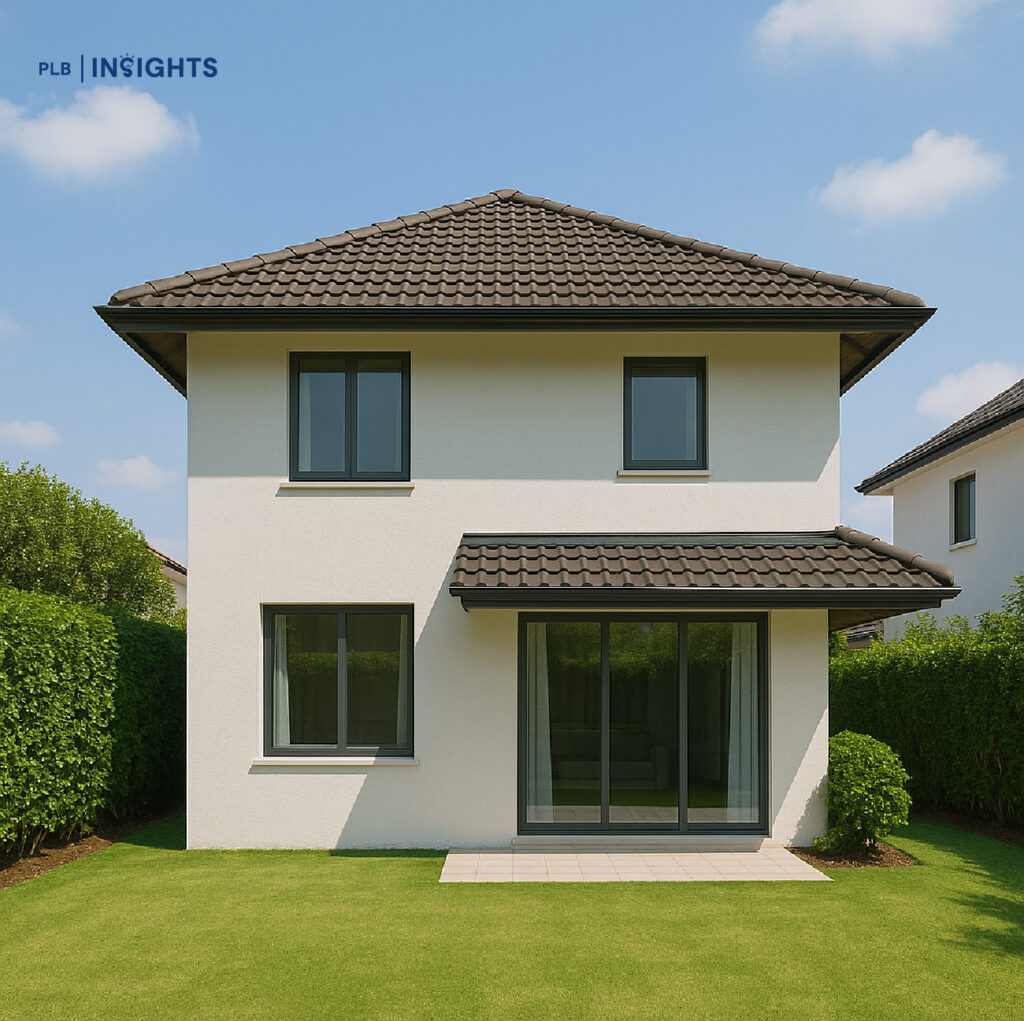
Exterior finishes in lighter shades and low solar heat gain coefficient (SHGC) glazing help reduce thermal absorption. For roofs, heat-reflective coatings can cut roof surface temperatures by up to 5°C, translating into cooler interiors and less air-conditioning use.
Solar Panels: Energy Efficiency with a Cooling Bonus
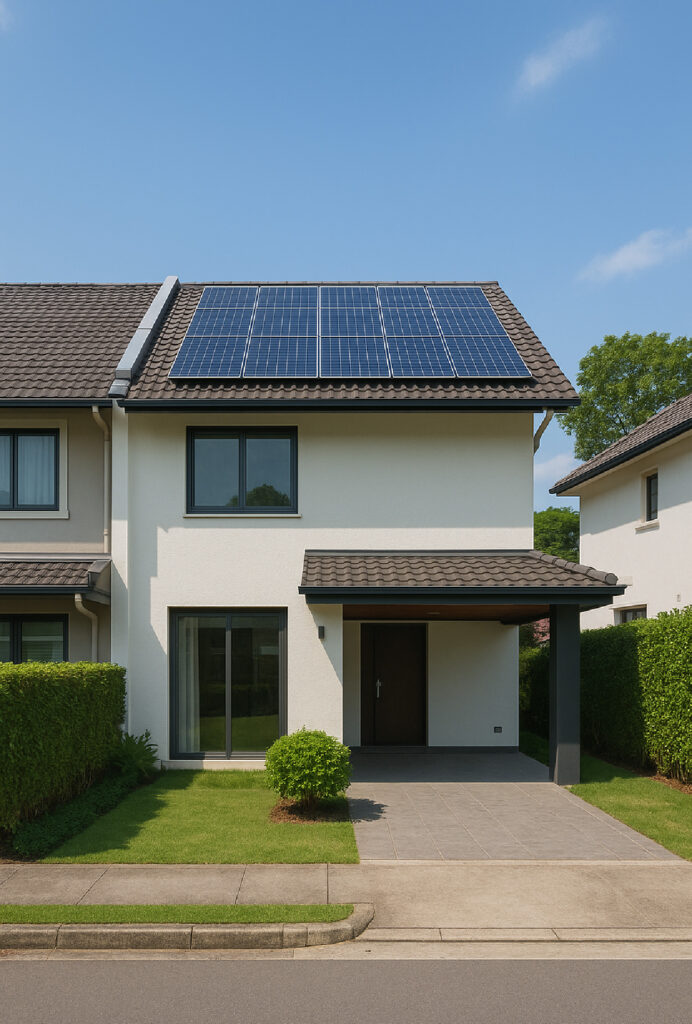
Solar panels are no longer just a green status symbol—they’re now one of the most practical upgrades for landed homes in Singapore. As covered in our earlier Landed VIP Club feature, installing a well-sized solar photovoltaic (PV) system costs between $20,000 and $25,000 and can generate average monthly electricity savings of about $400, assuming typical household consumption.
Beyond cutting energy bills, solar panels act as an additional layer of shading for your roof. By absorbing sunlight before it hits your roof surface, they can help keep attic and top-floor rooms slightly cooler—an often-overlooked benefit in our tropical climate. With a lifespan of 25 years and performance warranties that cap degradation at around 0.5–0.7% annually, solar PV systems are a long-term investment that shields you from both rising utility costs and rising temperatures.
For those undergoing major renovations or rebuilding, installing solar-ready roof structures—such as optimally angled panels and dedicated inverter spaces—ensures your home is future-proof, even if you don’t install panels immediately.
Green Roofs and Vertical Gardens: Cooling from the Top Down
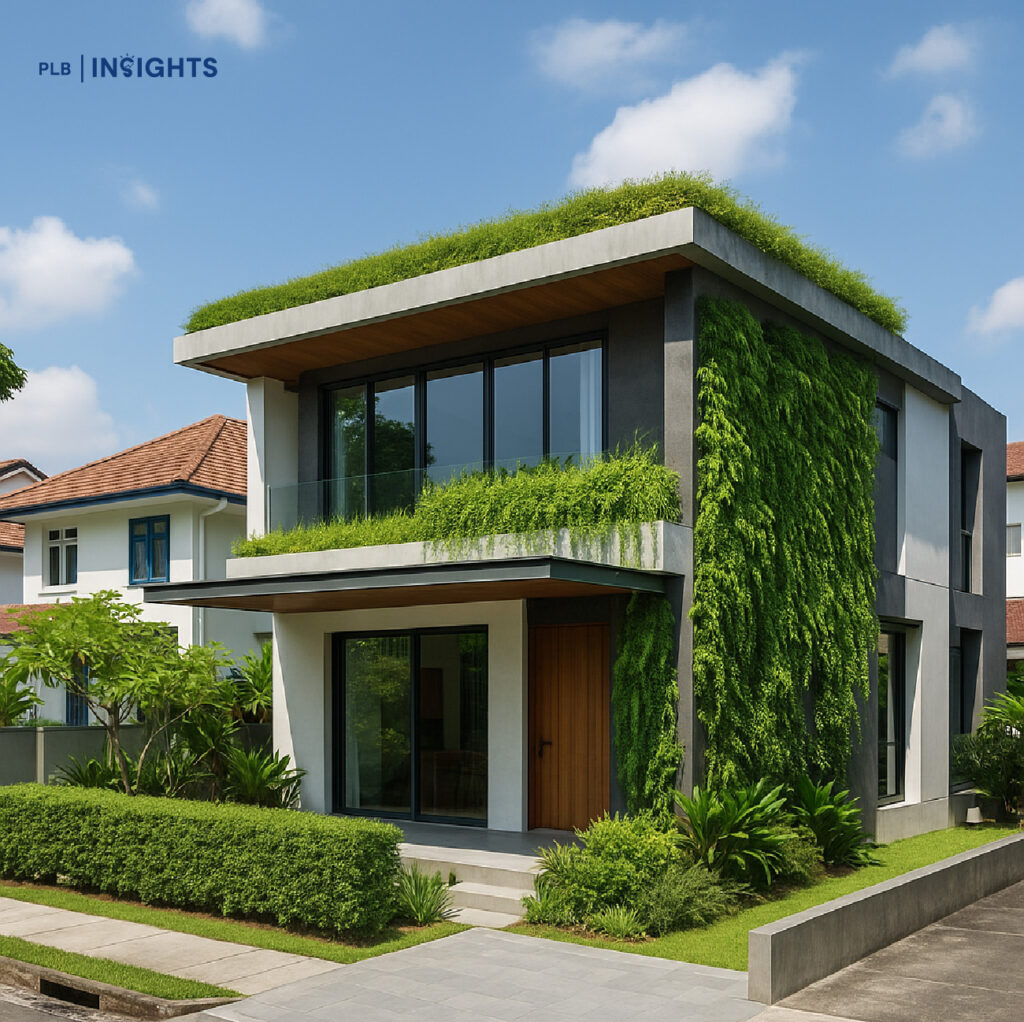
A green roof replaces conventional roof finishes with a layer of vegetation, adding insulation and softening the heat load on your home. In Singapore’s tropical climate, research has shown that well-designed green roofs can reduce roof surface temperatures by about 5–10°C compared to bare roofs, and lower adjacent air temperatures slightly—often by less than 1°C—during the hottest parts of the day. While the cooling effect isn’t as dramatic as in drier climates, the improvement in thermal comfort and reduced heat absorption still translate into meaningful energy savings over time.
For landed homes, intensive green roofs (with deeper soil profiles) can support shrubs or small trees, while extensive systems (shallower soil) are better for low-maintenance groundcovers. Green roofs also help absorb rainfall, easing stormwater runoff during heavy downpours.
If a full green roof isn’t feasible, vertical gardens or green walls can be integrated into facades or courtyard spaces. These living walls provide shade and cool surrounding air through evapotranspiration, making outdoor areas more pleasant while enhancing your home’s greenery.
Rainwater Harvesting: Making Wet Weather Work for You
Singapore receives an average annual rainfall of about 2,120 mm, much of which goes straight into drains. For landed homeowners, capturing some of that rainwater can reduce reliance on potable water for non-drinking uses.
A basic rainwater harvesting system includes roof gutters, a filtration unit, and a storage tank. The collected water can be used for landscape irrigation, washing cars, or cleaning outdoor areas. This reduces water bills and lessens strain on the municipal drainage system during storms.
Modern systems can be designed to integrate seamlessly with your home’s landscaping. For example, decorative water features can double as storage reservoirs, while underground tanks keep large volumes hidden from view.
Integrating Nature: The Role of Landscaping
Landscaping isn’t just about curb appeal—it can directly impact your home’s microclimate.
Native and Drought-Tolerant Plants
Using plant species adapted to Singapore’s climate reduces the need for intensive watering. Native species like sea hibiscus or tembusu provide shade and require less maintenance than exotic ornamentals.
Permeable Surfaces
Replacing impermeable driveways with permeable pavers allows rainwater to soak into the ground, reducing runoff and helping to cool surface temperatures.
Strategic Planting for Breezes
Low shrubs and open fences along prevailing wind directions keep airflow unobstructed, while tall trees are best placed for shade without blocking breezes.
Combining Strategies for Maximum Impact
Sustainable renovations aren’t about choosing one solution in isolation—they work best when combined. For instance, pairing solar panels with a green roof can maximise both energy generation and thermal insulation. Integrating rainwater harvesting with landscaped shade trees means you’re using collected water efficiently, while also reducing the heat load on your home.
When planning these upgrades, it’s worth engaging architects or builders familiar with tropical design principles. Their experience in orienting spaces, selecting materials, and meeting URA regulations for landed properties can ensure your renovation is both sustainable and compliant.
Future-Proofing Your Landed Home
With climate projections pointing to warmer days and more intense rain events, landed homeowners in Singapore have both a challenge and an opportunity. The challenge lies in designing homes that can withstand environmental shifts without sacrificing comfort. The opportunity is in creating properties that are energy-efficient, resilient, and potentially more attractive to future buyers who value sustainability.
Upfront costs for features like solar panels, green roofs, and rainwater harvesting may seem significant. However, when you factor in long-term energy and water savings, reduced maintenance from cooler building envelopes, and the potential for higher resale value, these upgrades often pay for themselves over time.
Final Thoughts
Sustainability isn’t just about reducing your carbon footprint—it’s about making your home smarter, more comfortable, and more adaptable to Singapore’s evolving climate. Whether you’re building from scratch or renovating an existing landed property, incorporating passive cooling, renewable energy, green infrastructure, and water management can ensure your home stays both green and cool for decades to come.
If you’d like tailored advice on integrating these features into your landed home renovation, our team can guide you through solutions that balance environmental benefits with market value.


